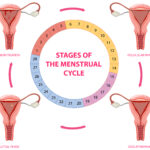FREE SHIPPING OVER $50
Always Tired? The Vitamin Deficiency Most Adults Have That Steals Your Energy (And How to Fix It!)
Do you find yourself constantly dragging? Hitting that afternoon slump with a vengeance? Or maybe you wake up feeling exhausted, even after a full night’s sleep? If “tired” feels like your default setting, you are absolutely not alone. In fact, a staggering number of adults experience chronic fatigue, often without understanding why. We grab another coffee, push through, and sometimes just resign ourselves to feeling drained.
But what if your persistent exhaustion isn’t just about busy schedules or getting older? What if there’s a widespread, often overlooked culprit that’s literally stealing your energy? We’re talking about a specific vitamin deficiency that impacts a significant portion of the adult population, leaving them feeling sluggish, foggy, and utterly drained. The good news? Once you identify it, the fix is often straightforward and incredibly impactful.
The Energy Drain: Why So Many of Us Are Exhausted

Before we reveal the culprit, let’s acknowledge that fatigue can stem from many sources. Stress, poor sleep, certain medical conditions (like thyroid issues or anemia), unhealthy diets, and lack of exercise can all contribute to feeling rundown. However, even when we try to address these, many people still struggle with energy levels.
Our bodies are incredibly complex machines, and like any machine, they need the right fuel and maintenance. Vitamins and minerals are those tiny but mighty cogs and lubricants that keep everything running smoothly, including our energy production systems. When even one key nutrient is missing, the whole system can slow down, leading to that pervasive feeling of tiredness.
The Culprit Revealed: Vitamin D Deficiency
The vitamin deficiency most adults have that’s heavily linked to chronic fatigue is Vitamin D deficiency.
It might surprise you. Vitamin D is often associated with bone health, but its role extends far beyond that. It’s actually more like a hormone than a vitamin, with receptors found in almost every cell in your body, including your brain and muscles. This widespread influence means a deficiency can manifest in a variety of ways, with persistent fatigue being one of the most common and debilitating.
Why is Vitamin D So Important for Your Energy?
So, how exactly does this “sunshine vitamin” impact your energy levels?
- Mitochondrial Function: Vitamin D plays a crucial role in the health and function of your mitochondria, which are often called the “powerhouses” of your cells. They’re responsible for generating ATP, the energy currency of your body. When Vitamin D levels are low, mitochondrial function can be impaired, leading to reduced energy production and fatigue.
- Immune System Modulation: Vitamin D is a powerful immune system modulator. A robust immune system helps your body fight off infections and reduces chronic inflammation. When your immune system is constantly battling, it drains your energy reserves. Optimal Vitamin D levels help keep your immune system balanced, freeing up energy for other bodily functions.
- Mood and Brain Health: Vitamin D receptors are found in areas of the brain associated with mood and cognitive function. Low levels have been linked to symptoms of depression and seasonal affective disorder (SAD), both of which often include profound fatigue. It can influence neurotransmitters like serotonin, which impacts mood and energy.
- Muscle Strength and Function: Vitamin D contributes to healthy muscle function and strength. Deficiency can lead to muscle weakness and aches, making physical activity feel more strenuous and contributing to overall tiredness.
- Hormone Regulation: As a hormone itself, Vitamin D interacts with many other hormonal pathways in the body, including those related to thyroid function and adrenal health, both of which are critical for energy regulation. Imbalances here can lead to fatigue.
The Startling Statistic: Why Are So Many Adults Deficient?
You might be thinking, “I get some sun, why would I be deficient?” The reality is, Vitamin D deficiency is incredibly widespread. While estimates vary by region and demographic, many studies suggest that over 50% of adults globally (and even higher in certain populations, like those with darker skin tones, limited sun exposure, or obesity) have insufficient or deficient Vitamin D levels.
Here’s why it’s so common:
- Limited Sun Exposure: We spend more time indoors, use sunscreen (which blocks D production), and live in northern latitudes where the sun’s UVB rays aren’t strong enough for Vitamin D synthesis for much of the year.
- Dietary Sources Are Scarce: Very few foods naturally contain significant amounts of Vitamin D. Fatty fish (salmon, mackerel, sardines) and some fortified foods (milk, cereal) are the primary dietary sources.
- Skin Pigmentation: Individuals with darker skin tones require significantly more sun exposure than those with lighter skin to produce the same amount of Vitamin D.
- Age: As we age, our skin becomes less efficient at synthesizing Vitamin D from sunlight.
- Obesity: Body fat can sequester Vitamin D, making it less available for use by the body.
- Medical Conditions: Certain medical conditions (like Crohn’s disease, celiac disease, kidney or liver disease) and medications can impair Vitamin D absorption or metabolism.
Given these factors, it’s easy to see why so many people are unknowingly running on empty due to this hidden deficiency.
How to Fix It: Reclaiming Your Energy
The good news is that correcting a Vitamin D deficiency is typically straightforward. Here’s your action plan:
1. Get Tested
The absolute first step is to confirm if you’re deficient. A simple blood test (specifically for 25-hydroxyvitamin D or 25(OH)D) can tell you your exact levels. Talk to your doctor about getting tested, especially if you’re experiencing chronic fatigue or any of the other common symptoms of deficiency (like bone pain, muscle weakness, or frequent illness).
- Optimal Levels: Most experts agree that optimal blood levels of Vitamin D are between 30 ng/mL and 60 ng/mL (75 nmol/L and 150 nmol/L). Levels below 20 ng/mL (50 nmol/L) are considered deficient.
2. Strategic Sun Exposure (When Possible)
While sun exposure is the most natural way to get Vitamin D, it comes with caveats due to skin cancer risk.
- Mindful Exposure: If you live in a sunny climate and are comfortable with it, aim for 10-30 minutes of midday sun exposure (when the sun is strongest and UVB rays are most effective) on exposed skin (like arms and legs) a few times a week, without sunscreen. This varies greatly by skin type, location, and time of year.
- Be Sun Safe: Always avoid sunburn. If you’ll be out longer, cover up or use sunscreen.
3. Incorporate Vitamin D-Rich Foods
While food sources alone are often insufficient to correct a significant deficiency, they can contribute to your overall intake.
- Fatty Fish: Wild-caught salmon, mackerel, sardines, and tuna are excellent sources.
- Cod Liver Oil: A traditional source, though often taken as a supplement.
- Fortified Foods: Many milks (dairy and non-dairy), cereals, orange juice, and yogurts are fortified with Vitamin D. Check labels, as amounts vary.
- Mushrooms: Some mushrooms, especially those exposed to UV light, contain Vitamin D2 (a different form, less potent than D3, but still useful).
4. Supplementation (The Most Effective Solution for Deficiency)
For most people with a confirmed deficiency, supplementation is the safest and most effective way to raise Vitamin D levels.
- Choose D3 (Cholecalciferol): This is the same form your body produces from sunlight and is more effective at raising blood levels than Vitamin D2.
- Dosage Varies: Your doctor will recommend a dosage based on your current levels and your individual needs. Common maintenance doses range from 1,000-5,000 IU daily, but therapeutic doses for deficiency can be much higher (e.g., 10,000 IU daily or higher for a period). Never self-prescribe high doses without medical guidance.
- Take with Fat: Vitamin D is a fat-soluble vitamin, so it’s best absorbed when taken with a meal that contains some fat.
- Consider K2: Some experts recommend taking Vitamin D3 with Vitamin K2, as K2 helps direct calcium to your bones and teeth, preventing it from accumulating in soft tissues. Discuss this with your doctor.
What to Expect When You Correct a Deficiency
When your Vitamin D levels are optimized, many people report a significant improvement in their energy levels within a few weeks to a few months. You might notice:
- Reduced fatigue and increased stamina
- Improved mood and cognitive clarity
- Better sleep quality
- Fewer aches and pains
- Stronger immune function
It’s important to be patient and consistent. It takes time for your body to replenish its stores and for the benefits to become noticeable.
Beyond Vitamin D: Other Potential Energy-Stealers
While Vitamin D is a huge culprit, it’s wise to consider other potential nutrient deficiencies if fatigue persists, always in consultation with your doctor:
- Iron Deficiency (Anemia): Very common, especially in women. Leads to profound fatigue, weakness, and paleness.
- Vitamin B12 Deficiency: Essential for nerve function and energy production. Common in vegans/vegetarians and older adults.
- Magnesium Deficiency: Involved in over 300 biochemical reactions, including energy production.
- Thyroid Issues: Not a deficiency, but an underactive thyroid can mimic fatigue.
Your doctor can run a comprehensive panel to check for these and other potential causes of your exhaustion.
Reclaim Your Vitality
Feeling constantly tired is not something you just have to live with. It’s a signal from your body that something might be off. For many adults, that signal points directly to a Vitamin D deficiency. By understanding its profound impact on your energy, getting tested, and taking proactive steps to optimize your levels through strategic sun exposure, diet, and often, supplementation, you can truly unlock a new level of energy and vitality. Stop just surviving the day, and start thriving!
Related Articles
- Is Psyllium Husk the Safer and More Affordable Ozempic Alternative No One Talks About?
- Big Beauty’s Dirty Secret: The Skincare Vitamin Linked to Liver Failure
- Stop Wasting Money: These 5 Popular Supplements May Wreck Your Kidneys, Experts Warn
- Stop Wasting Vitamin B12: The One Mistake 90% Make (Here’s When to Take It, Say Experts)
- These Medications and Magnesium Don’t Mix—Here’s Why It Can Be Dangerous







